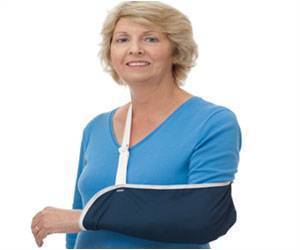Obesity has been thought to help protect against fractures. This is because
.
However, recent studies have suggested that the relationship between obesity and fracture risk varies depending on sex, the skeletal site studied, and the definition of obesity used (body mass index [BMI] vs. waist circumference).
To find out more, researchers analyzed data from a prospective population-based cohort of almost 20,000 individuals aged 40-70 years from Quebec, Canada.
Participants were selected randomly between 2009 and 2010, assessed once at recruitment, and followed through healthcare administrative databases until March 2016. BMI and waist circumference (WC, a measure of abdominal obesity) were measured at recruitment.
Fractures were identified using a previously validated algorithm. During a median follow-up of 5.8 years, 497 women and 323 men sustained a fracture (820/19,357 participants). There were 415 major osteoporotic fractures (MOFs – fractures of the hip, femur, spine, wrist, or humerus), 260 in women and 155 in men.
There were 353 distal lower limbs (the part of the leg below the knee) fractures (e.g. fracture of the ankle, foot, and lower tibia or shinbone), 219 in women and 134 in men.
There were 203 distal upper limbs (the forearm from the elbow down) fractures (e.g. fracture of the wrist, forearm, or elbow),141 in women and 62 in men.
Waist Size Matters for fracture
In women, greater WC was linearly associated with an increased risk of fracture. The association between WC and ankle fractures was particularly strong.
In women, greater BMI was associated with a greater risk of distal lower limb fractures. Compared with women with a BMI of 25 kg/m², those with a BMI of 27.5-40 kg/m² showed a greater risk of distal lower limb fractures.
The ankle, unlike the hip and thighbone, is not protected by soft tissue, which could make it more prone to breaking during a fall.
This may be due to visceral fat, the fat that is very metabolically active and stored deep within the abdomen, wrapped around the organs secrete compounds, which badly affects bone strength.
We also know that people with obesity take longer to stabilize their bodies, when they trip, for example. This is particularly pronounced when weight is concentrated at the front of the body, suggesting that individuals with the distribution of body fat in the abdominal area may be at a higher risk of falling.
In men, increases in BMI and WC were not significantly associated with fractures. Researchers doubt whether a larger number of fractures in men is needed to determine whether this is a true result or whether the pattern for men follows that for women.
These findings show that the relationship between obesity and fractures is complex and varies by sex. In women, there was a linear relationship between waist circumference and the incidence of fracture at any site and the distal lower limb, particularly at the ankle.
The aging of the population and the rising incidence of obesity may lead to rising rates of fractures in the coming years. Understanding the mechanisms by which women with abdominal obesity, are more susceptible to fractures, will help in developing effective prevention strategies.
Source: Medindia



